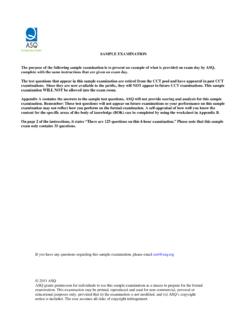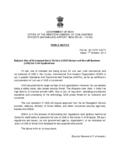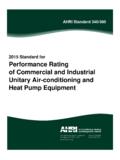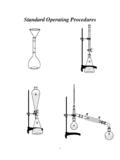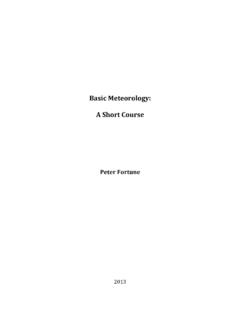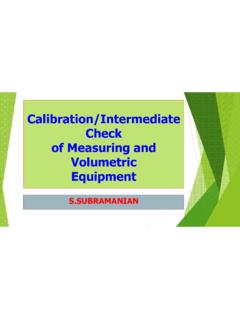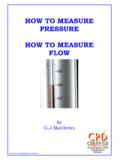Transcription of Micro Motion 7812 Gas Density Meter - Emerson
1 Installation and Maintenance Manual P/N MMI-20018377, Rev. AC. April 2012. Micro Motion 7812 Gas Density Meter INMETRO Certificate No. AEX-10971-X. IMPORTANT NOTICE. DO NOT drop the Meter . HANDLE WITH CARE. DO NOT use liquids incompatible with MATERIALS OF CONSTRUCTION. DO NOT operate the Meter above its RATED PRESSURE. DO NOT PRESSURE TEST above the specified TEST PRESSURE. DO NOT expose the Meter to excessive vibration (> continuous). ENSURE all ELECTRICAL SAFETY requirements are met ENSURE all EXPLOSION PROOF requirements are applied ENSURE Meter and associated pipework are PRESSURE TESTED to 1 times the maximum operating pressure after installation Contents Chapter 1 Introduction General.
2 1-1. Principle of 1-1. Design features .. 1-3. Accuracy .. 1-3. Repeatability .. 1-3. Stability .. 1-3. The 7812 versions .. 1-3. Frequency relationship .. 1-3. Safety .. 1-4. Chapter 2 Applications General .. 2-1. Orifice plate metering .. 2-1. Volumetric flow meters .. 2-1. Other applications .. 2-2. Chapter 3 General Installation Delivery component list .. 3-1. General installation 3-1. Density equilibrium .. 3-2. Temperature equilibrium .. 3-2. Pressure 3-2. Flow rate .. 3-3. Response time .. 3-4. Deposition, corrosion, condensation and vibration.
3 3-5. Recommended installations for 78121/2/3/4 pocket unit .. 3-6. Pressure recovery method .. 3-6. Installation procedure .. 3-7. Other methods .. 3-8. Recommended installations for 78125 cross-pipe units .. 3-9. Cross-pipe method .. 3-9. Installation procedure .. 3-10. Chapter 4 Mechanical Installation General .. 4-1. Physical dimensions .. 4-1. Liners .. 4-4. Filtration .. 4-4. Pocket installation .. 4-4. Anti-vibration installation .. 4-5. External pocket installation .. 4-8. Post-installation mechanical checks .. 4-8. Cont-1.
4 Chapter 5 Electrical Installation General .. 5-1. EMC cabling and earthing .. 5-1. Use with Signal Converters .. 5-2. System connections (7950/7951) .. 5-2. Connections to 7950 Signal Converter .. 5-2. Connections to 7951 Signal Converter .. 5-7. System connections (Customer's own equipment) .. 5-9. Non-hazardous areas .. 5-9. Hazardous areas .. 5-10. Post-installation checks .. 5-12. Chapter 6 Interpretation of Calibration Certificate Calibration certificate .. 6-1. Instrument serial numbers .. 6-1. Pressure test .. 6-1. General Density equation.
5 6-1. Temperature corrections .. 6-1. User gas offset data .. 6-2. Chapter 7 Calibration and Performance Factory calibration .. 7-1. Calibration of transfer 7-1. Calibration 7-1. Calibration temperature .. 7-1. Pressure measurement .. 7-1. Evaluation of Density .. 7-1. Derivation of constants .. 7-1. Computed data .. 7-1. Calibration using transfer standards .. 7-2. Preparation .. 7-2. Calibration .. 7-2. Computation .. 7-2. Temperature coefficient evaluation .. 7-2. Calibration check methods .. 7-2. Ambient air test .. 7-2. Atmospheric pressure test.
6 7-2. Vacuum test point .. 7-3. Pressure/temperature of known gas test .. 7-3. Cont-2. Chapter 8 Maintenance General .. 8-1. Calibration check methods .. 8-1. Mechanical 8-1. Electrical maintenance .. 8-2. De-mounting the 7812 .. 8-3. Removing the 7812 from the pipeline .. 8-3. Removing the electronic housing .. 8-4. Removing the spigot .. 8-6. Removing the cylinder, spoolbody and filters .. 8-6. Post maintenance tests .. 8-9. Fault 8-9. Spare parts list .. 8-10. Appendix A Specification Appendix B Calibration Certificate Appendix C Orifice Metering Appendix D Velocity of Sound Effect Appendix E Ethylene Measurement Appendix F Reference Data Appendix G Returns Forms Appendix H Certified System Drawings Cont-3.
7 Cont-4. 7812 Gas Density Meter Installation and Maintenance Manual Chapter 1. Introduction General The 7812 Gas Density Meter was specifically designed for metering gas in pipelines. Measurements are made continuously with the accuracy equal to that normally associated with the best laboratory methods. The 7812 is a replacement for the 7810, 7811, and 3093 Series, and is fully interchangeable with them, incorporating the following design improvements: Single sensing element for all Density ranges up to 400 kg/m3. New design of vibrating cylinder sensing element, which offers less sensitivity to changes in gas composition and a lower Velocity of Sound Effect.
8 Improved temperature equilibrium performance. Improved accuracy. Improved maintenance features, including new amplifier electronics and a more serviceable gas filter arrangement. A 4-wire PT100 temperature sensor has been incorporated for installation and check purposes. This Meter is suitable for most types of installation. Aspects such as performance, response characteristics, filtration and servicing vary from application to application and require careful consideration as described in this manual. The vibrating cylinder sensing element is sensitive to changes in Density and, since it is unstressed and is manufactured from Ni-span C steel, it has very stable characteristics.
9 The influence of other variables such as temperature, line pressure, flow rate and gas composition are minimized and carefully defined so that, where necessary and for high precision measurements, suitable corrections can be applied. Only one low voltage supply is required for the Density measurement and the power consumption is low thus minimising self-heat generation. The output signal is a square wave, the frequency depending on the gas Density . This type of signal can be transmitted over long distances and easily measured without any loss in accuracy.
10 The PT100 temperature sensor may be used in the conventional manner. Principle of operation The Density -sensing element consists of a thin metal cylinder, which is activated so that it vibrates in a hoop mode at its natural frequency. The gas is passed over the outer and inner surfaces of the cylinder and is thus in contact with the vibrating walls. The mass of gas, which vibrates with the cylinder, depends upon the gas Density and, since increasing the vibrating mass decreases the natural frequency of vibration, the gas Density is simply determined by measuring this frequency.










